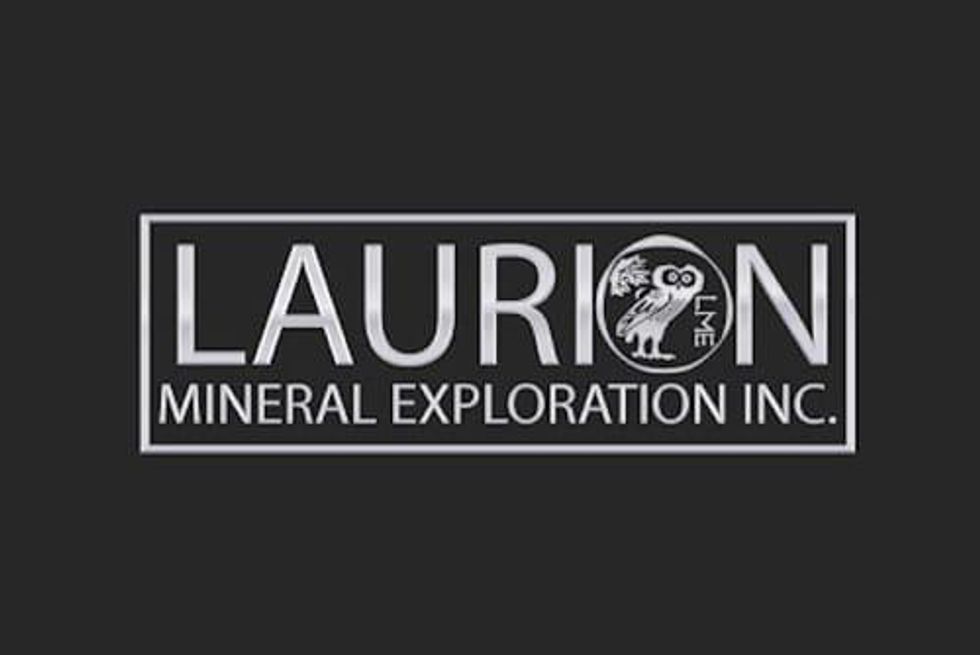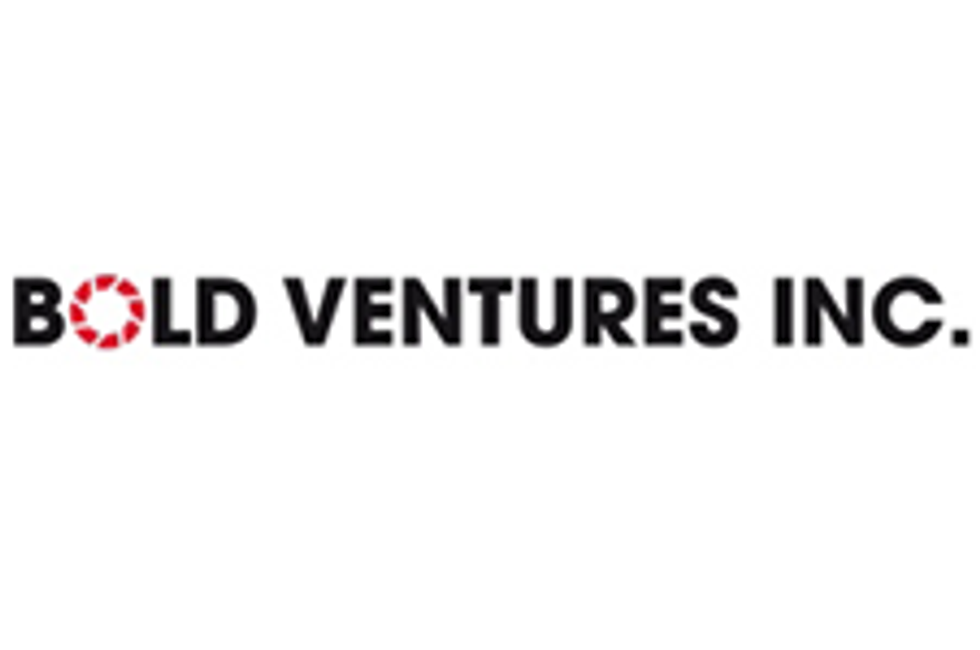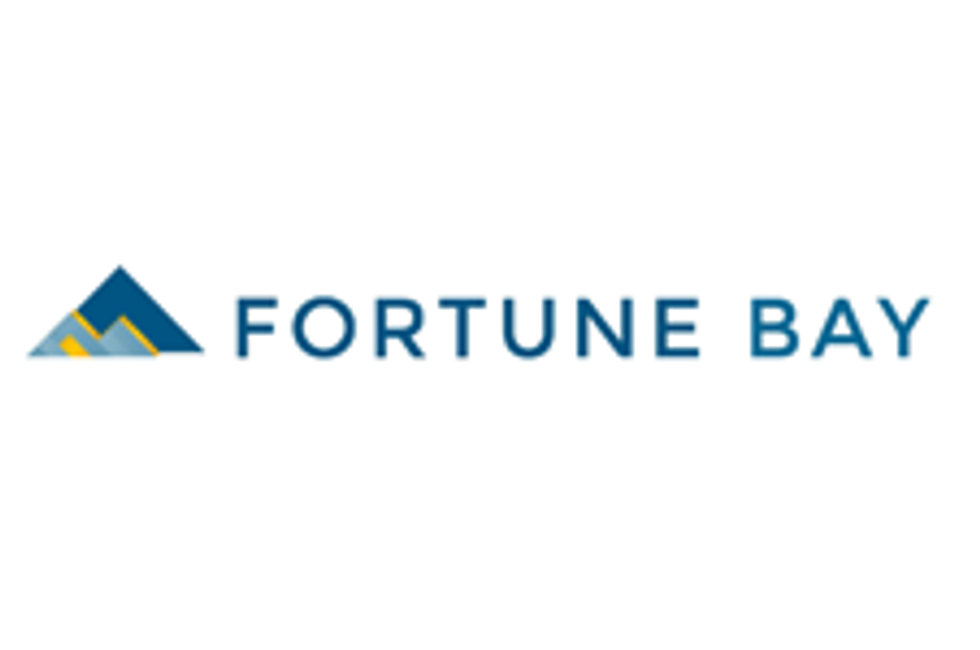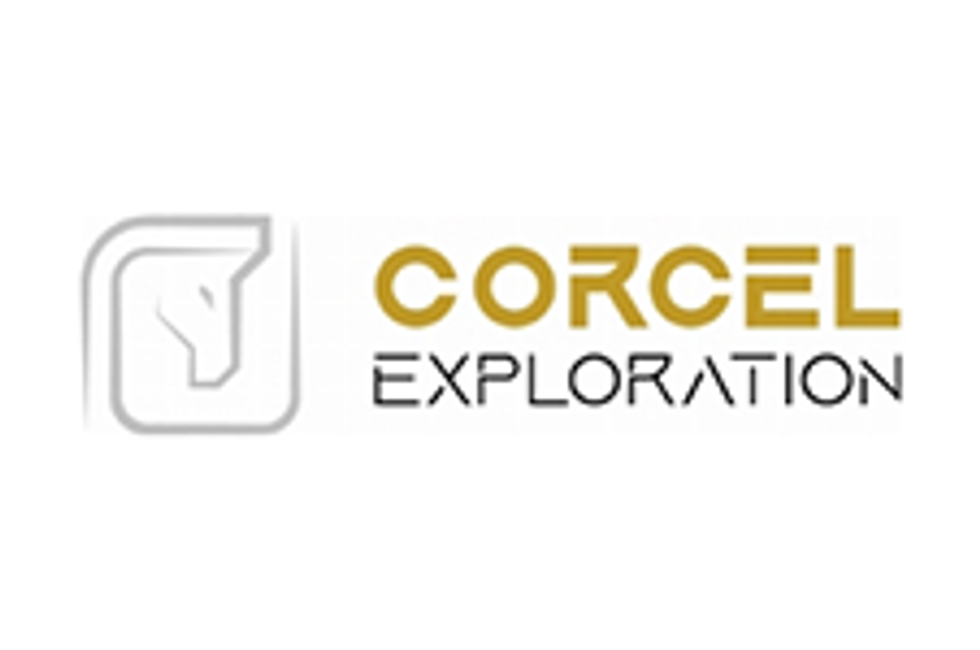VIDEO - John Kaiser: Gold Price Could Reach $1,600 to $2,000 this Year
John Kaiser explains why he thinks we could see a big move upward in the gold price in 2018. He also touches on stocks and other metals in this interview.
John Kaiser of Kaiser Research is bullish on gold in 2018, and in this Vancouver Resource Investment Conference interview he names a few reasons why.
Geopolitical issues will be at play, as will a push and pull between gold and the bitcoin and cannabis industries. But US President Donald Trump will be another key player.
“A move into [the] $1,600, $2,000 range is very plausible without it being inflation driven. I think this is going to happen this year — this will kickstart the gold part of this market and driving it is Donald Trump’s declaration that America is no longer great,” says Kaiser.
In this wide-ranging interview, Kaiser also discusses what other metals he likes right now and which juniors he thinks have good prospects in 2018.
- 0:28 — thoughts on the resource space from January 2016 to the present.
- 5:10 — how bitcoin and cannabis are impacting commodities prices and stocks.
- 8:34 — why the mining industry will do well in 2018.
- 12:10 — the outlook for gold this year.
- 15:19 — other metals Kaiser is bullish on.
- 17:32 — three stocks Kaiser likes right now: InZinc Mining (TSXV:IZN), Nevada Exploration (TSXV:NGE) and Scandium International Mining (TSX:SCY).
Watch the interview, or click the links above to jump to specific parts of the discussion. The transcript for the interview is also available below.
INN: Before we talk about 2018, can you tell me what you thought about last year? How did the resource space do?
JK: Let’s back up to January 2016, when we were at the very bottom of a bear market that began in 2011. 2016 surprised everybody with a ramp up — all kinds of stocks, bottom fish, undervalued companies, they all came to life and that peaked in August of 2016, and we had kind of a feeble year end. We had a good rally in the first quarter of 2017. There was a lot of financing. In fact, in March there was financing for venture-listed companies on a scale comparable to June 2011. So I was pretty optimistic — and then it all went flat. It trended down, ended the year on a feeble note.
The one bright spot that emerged in there … in July was Novo Resources (TSXV:NVO) and its Pilbara play in Australia, where they found a … conglomerate bed that had an unusual number of quite large-sized nuggets in it. This became what I call the “Wits 2.0” hypothesis, which is a reference to South Africa, where the Witwatersrand Basin has 1.6 billion ounces mined and another billion ounces sitting in these reefs that project underneath the basin. That got the market really going because here was something that — and this company Novo had staked … 10,000 square kilometers — so if we had a similar type of depositional environment that had been overlooked by past exploration, we had potentially the biggest [gold] discovery by a junior in history.
That got a lot of excitement going, but it began to fizz in November, when the company revealed that what they were finding was nuggets that had been eroded from their original location and transported and deposited in this bed and … they had a sampling problem. That play has stalled, but it is still intact because downslope it is possible that these original algae-based deposits of gold similar to the “Wits 1.0” are present, and the reason nobody ever found it in the past is they all thought that this kylena basalt was the cap, the same as the Ventersdorp in South Africa, and they looked at the hardy sandstone beneath that. But there is another cap beneath that which actually is the equivalent and it appears nobody looked underneath. I think in the second half of … this year, the … “Wits 2.0” hypothesis will come to life again if they confirm that “Wits 1.0”-style mineralization exists downslope.
In the last quarter, I said, “you know, what we’re seeing here is a low tide that you see before a tsunami.” I was telling everybody, “the resource sector is going to do really, really well.” And then I saw the TSX Venture volume and value traded go through the roof in the last three months of the year, and I said, “I’m not feeling this in the 1,200 resource juniors that I’m watching. What is going on?”
So I used my database to extract the value traded for each of the resource companies for every day, and related that total. And I saw that the value of the resource juniors, which historically is 40 to 60 percent of total Venture Exchange value traded, had plunged as low as 7 percent. And when I dug deeper to see where this phenomenal surge in value traded [was] coming from, I realized it was dominated by two groups: the crypto/blockchain-type stories, and cannabis/weed-type stories. And I said, “oh no. 1999 to January 2000 — deja vu, dot-com bubble. It’s going to explode.” I looked at this stuff, and it’s like it has no chance of being sustainable. I said, “is this just the same, where we’re going to have March 2000 [when the] dot-com bubble exploded?” It took another three years — mid-2003, when the China supercycle kicked in — for the resource juniors to get into an uptrend. And that has been the question I have been contemplating: is this January 2000 all over again?
INN: Can you answer that question? Do you see 2018 unfolding at the same way as 2000 did?
JK: I did some head scratching about this, and I looked at the blockchain/cryptocurrency concept. I think the blockchain ledger is a revolutionary concept that has many applications. For example, IBM (NYSE:IBM) and Maersk are teaming up to create a blockchain ledger to deal with the paperwork cost of shipping, which apparently … sucks up 20 percent of the cost. So here’s something that could represent a huge cost saving.
There’s a Peruvian economist called Hernando de Soto who has written about why these indigenous populations always stay poor in places like Peru. And he said it’s because they don’t have formal titles to their little places. I mean, nobody’s going to kick out a person living in this little place, but they’re not part of the formal title system, which means no credit system can evolve. So these people are always stuck in a rut. He is now working with blockchain people to develop a blockchain ledger to take all these small informal dwellings and put them into a title form so that those people can be loaned money. I think there’s — and even in terms of crypocurrency, at some point there will be a global currency that is based on a blockchain ledger, but that is decades away.
The bitcoin and all that — none of this has any intrinsic value. Most of these things are ultimately either cost savers or public goods, so the bubble we’re seeing in the valuations, it’s a classic bubble, everybody’s trading. It’s same thing with the marijuana. When you decriminalize marijuana, you take away its profitability, and it’s something that anybody can grow in their backyard or even inside their apartment. So where’s the profit margin going to go? These bubbles, I think will play themselves out, but they’re not transformational yet, and the marijuana will never be transformational.
Dot-com was transformational. The US economy was cranked up because of the dot-com boom — the implications, the mobilization of economic activity. Weed and blockchain have not done that yet. When these manias pop, it’s going to have zero consequences for the rest, but it has an interesting effect because it is Millennials who have come into this. And they’ve done this because they’re not as well off as people such as myself were at their age. They’ve also put off family formation, so the responsibilities are much lower than it was for us. They are in the mood to make a lot of money quickly to catch up to where we were so that they can get on with what being a human being is all about.
They have now got the gambling fever, and I think at some point they’re probably going to cash out. It’s going to be us older folks who are going to pile in and buy blockchain at the top of the market, and transfer some of our money to them. I’m hopeful that this money will refocus into the resource sector where it’s being shunned because every project has a finite value limit. It’s rooted in the world of fundamentals, but that also means you can quantify the size of the prize and place a bet that’s longer term rather than short-term momentum. I have a feeling this bubble, the blockchain and weed, will bring the Millennial audience into this sector.
Why do I think the sector is going to flourish later this year? The global economy is growing. America continued the trend from last year. The Eurozone is finally making money and growing. I read a report just last week in the Financial Times about China reporting 6.7-percent GDP growth. Big deal, they’ve been doing 6 to 7 percent … since the meltdown, but the article pointed out this number is based on a revised set of statistics. It appears that the Chinese, the local groups, have all been lying to Beijing about how well things have been going. They haven’t been going well, and we’ve seen that in the resource sector — we had the bear market because it went way, way down, the metal prices went down. And yet, how can when you have 6.5 percent compounding, and America flat and Europe flat … why are we seeing this weakness in the markets? Well China was doing a lot worse, but they apparently had a fabulous year last year, and the metal prices we saw going up last year and are still up, and everybody’s saying, “the resource prices are going like this. What’s with this disconnect? Are the resource prices predicting the decline the way they did six years ago, and the metal prices are going to come down?”
Remember, gold peaked in August 2011. Resource equities started going down in December 2010. But in this case here, the underlying economy is strong. It has nothing to do with the manias. We do have the equity markets up at record highs, and people are worried that rising interest rates will pull that down, but we have this tax windfall in America. We have groups like Apple (NASDAQ:AAPL) already doing this reshoring trend because something has been set in motion that’s probably irreversible. The US is shrinking in relative terms, China’s pushing the envelope. There are potential serious problems down the road, but for now the global economy is doing well.
Zinc is going to continue to do well because China continues to enforce anti-pollution measures. Copper is doing well because of the underdevelopment, of course [that is] the case with zinc also. Even nickel is showing signs of life as demand grows and exceeds the ability of the Philippines to crank out nickel pig iron. I think we’re going to see resource metals, the real-world metals, continue to do well — not super well. It’s not a supercycle over again, but it’s a business cycle uptrend with at least another one to two years. Trump has put himself into a mess — the only way he can dig himself out of it is to go back to his promise from 2016 of an infrastructure renewal, and that of course will increase the deficit even more than the tax change that they’ve created, which will bring back to life the narrative for gold — namely inflation down the road — but we’re going to not see that kick in. We’re going to see a lot of enthusiasm develop around the world, and the resource sector is going to lift off sometime between now and June, and we will not have the PDAC curse the way we did last year. I think this year is really different.
INN: You’ve talked about a bunch of different metals. Do you have a specific outlook for gold this year?
JK: Well [with] gold [there] has been this big controversy about “is crypto the new gold?” I’ve always argued that gold is not money. Crypto can become money because money is an information system that doesn’t — it’s an abstraction. It can’t have a high real price to exist. Gold has a very real cost of bringing it out of the ground, and I think with all the — gold’s been a prisoner of this sort of right-wing gold bug mentality. Libertarians, Trump types and so on, and it’s alienated gold from a large portion of the population, including the people who actually run gold-mining companies, because they’re not thinking in these apocalyptic [terms] — “we have evil socialism taking over,” and all this kind of stuff.
The crypto thing is pulling that crowd into a different black hole, and liberating gold for a much bigger audience. And this audience is interested in gold as an asset class that continues to exist no matter what hell breaks loose in all other financial markets. And adding to this … growing demand for gold, that could push up the real price as opposed to inflation or the US dollar declining. That doesn’t make a deposit any more profitable tomorrow at the higher gold price because the costs go up right with it, but a real price increase is critical. $400 gold from 1980 is $1,240 today. We’re not far off from $1,330, or wherever it is. A move into [the] $1,600, $2,000 range is very plausible without it being inflation driven. I think this is going to happen this year — this will kickstart the gold part of this market and driving it is Donald Trump’s declaration that America is no longer great.
Now, the majority of Americans don’t believe that, but after one year of the Trump presidency, the rest of the world has started to believe that he’s right. He has in effect accelerated a long-term trend of relative marginalization of the US on a global stage where you have China emerging as a competing superpower. This trend is now irreversible — his talking point is still to pull America into itself, become isolationist, an autarchy as they call it.
China just shut down VPNs, virtual private networks. Foreign companies cannot communicate within themselves without Beijing spying on them. They have to retreat. So it’s coming back to America. It’s coming back to Europe, and that’s also going to fuel that whole infrastructure boom, the desire, “we need to renew ourselves. We are not in apocalypse. We may be fading in relative terms, but we are still going to be an important force going forward.” And that’s all good for gold … so I’m bullish on gold.
INN: Good to hear. What other metals are you bullish on? We’ve covered zinc and copper, and now gold.
JK: I’ve talked about security of supply risk in the past, and that seemed to fade for awhile. The rare earths bubble was sort of the earliest manifestation of that. But China is still the source of a lot of critical metals, and we also have — even though Trump says climate change is bogus and fossil fuels are wonderful, we have a trend in motion that the rest of the world and industry is ignoring him, and we’re seeing the electrification of the car industry. That creates demand for different metals. We have battery technologies coming in, so we have a boom in lithium. We have a boom in cobalt. I think the cobalt boom in terms of higher prices, it’s probably going to stabilize here. Higher is not better, because then the pressure for substitution kicks in, just as it did with the rare earths back in 2010, 2011.
But the rare earths themselves are going to come back in vogue because North Korea is a huge, huge problem. Kim Jong-un is boxed into a corner. Somebody’s going to kill him. He’s got nothing to lose. So he is going to push the envelope, and hopefully it doesn’t come to a nuclear event. If it does, then everything I said earlier — forget it. We’re done, end of the civilization. The Pandora’s box is open. We’re doomed. But there will come some confrontation, and it’s really about China. Why doesn’t China pull the plug on North Korea? That would be the end of this problem. That’s the backdrop: a conflict between America and China. And China controls the supply of things like antimony, graphite, a lot of things. These things are going to bifurcate again, have two different markets, one within China, domestic, and another within the rest of the world. There’s going to be that same security of supply boom going on as it was back in 2010/2011. Except this time, everybody will know why it’s happening.
INN: Last question. Please tell me about some of the companies you’re watching this year and some of the milestones they have coming.
JK: Your audience is going to hate me because I’m going to be a broken clock. But you know, broken clocks are right, they’re right once a day. To me, the bear market has been like a 24-hour clock. The three companies that I will mention [are] InZinc Mining, Nevada Exploration, Scandium International. I have been talking about these for almost a decade, and I promise I will not be talking about these ones a year from now, because this is the year where they finally get lift off, where they start delivering what they have been promising to do.
I’ve got lots of new picks and ideas, the weakness in the market. I’ve got a special deal now where for $100 you get 30 days of access to everything, and then my formal spec value-hunter picks to the end of the rest of the year. It’s probably the best deal and best timing ever.
But InZinc Mining finally has the money, $3.5 million, to explore West Desert for expansion potential that could make this another Arizona Mining (TSX:AZ) [with the] Hermosa Taylor project, which was my fantastic pick from 2016. But West Desert itself, where the metal prices are now, it’s already in the money. The optionality has been delivered by the change in prices. Zinc’s going to go over $2, but it’s never going to stay there — but $1.20 to $1.50 is probably the new long-range thing. This thing gives you both feasibility demonstration for a project in the US, where they’re going to need more deposits. It has an indium component that’s going to be important, and it has this exploration potential to be substantially bigger. And that work drilling will start in March, and we’ll find out — and when they’re done with that, even if they haven’t found anything, the stock’s still undervalued because they just retreat to the original West Desert resource and start infilling that.
Nevada Exploration has spent 10 years in the wilderness deploying its groundwater methodology for collecting water samples and measuring it for gold. Last year, they had a big innovation with a new — what they call a Scorpion rig, which allowed them to collect data in three dimensions rather than two dimensions. [It] still left way too much room where were these deposits could be squirrelled away in under the gravels of Nevada. Now they’ve done it and they’ve just shown us the Kelly Creek Basin target. It’s a phenomenal target. It looks like it’s several times bigger than Lone Tree, which was a 5-million-ounce deposit — that was an open-pit mine, it’s now depleted.
They’re now entering [this] stage. [They’ve] raised the money, [they need to] drill this, find where the structures are — and we don’t know until they’ve drilled whether the gold is concentrated. But the location and where it is — 20-million-ounce Twin Creeks over here, 5-million-ounce Lone Tree over there, 8-million-ounce Marigold down here. This is a great thing, and if they prove it, it opens up “Nevada 2.0” because everybody says, “wow, half of Nevada has been inaccessible.” That one I think I won’t be talking about next year.
The last one is my Scandium International. They spent last year getting their mining lease, repatriating 100 percent of the project. They are now in the midst of the developing offtake markets. They’re now the clear leader, everybody else has refocused on the cobalt content of their laterite systems. They haven’t developed the flow sheets. They definitely haven’t developed the offtake market. This company will raise $100 million this year, start building this mine and they are going to be the leader of the scandium space. Of course, there’s a big interest in aluminum alloys. Aluminum is doing well, the companies are spinning out their alloy divisions. Light weighting is a key part of the whole electric vehicle growth curve, and aluminum with scandium makes that a lot better. There’s now scientists coming all out of the woodwork playing with scandium, and a special relationship with other metals.
For example, there’s a potential lithium-ion battery death star coming in the form of the magnesium-ion battery. The Department of Energy in the US has just demonstrated that a combination of magnesium and scandium and selenium creates a solid-state electrolyte that solves all of the magnesium-ion battery’s problems. Magnesium-ion battery is the holy grail of the battery industry. It’ll take five, seven years to commercialize that. But this could itself become a future demand for scandium. So scandium is an innovation metal whose availability is becoming a reality that’s causing all kinds of new applications to develop. I think it’s the hottest metal out there, and Scandium International is finally going to be recognized in 2018 for what it has accomplished.
INN: Thank you so much for joining me today. Very insightful as always, and we’ll hold you to those three companies, l’ll ask you again next year.
JK: Yes. You can dare me. You can make me give a confession and say why I will never mention their names again. Thank you, Charlotte.
Don’t forget to follow us @INN_Resource for real-time news updates!
Securities Disclosure: I, Charlotte McLeod, hold no direct investment interest in any company mentioned in this article.
Editorial Disclosure: The Investing News Network does not guarantee the accuracy or thoroughness of the information reported in the interviews it conducts. The opinions expressed in these interviews do not reflect the opinions of the Investing News Network and do not constitute investment advice. All readers are encouraged to perform their own due diligence.






